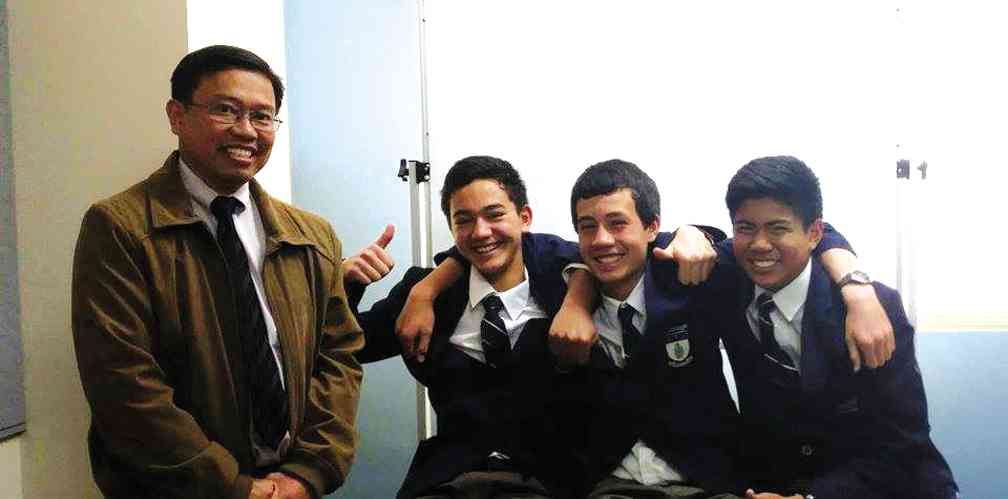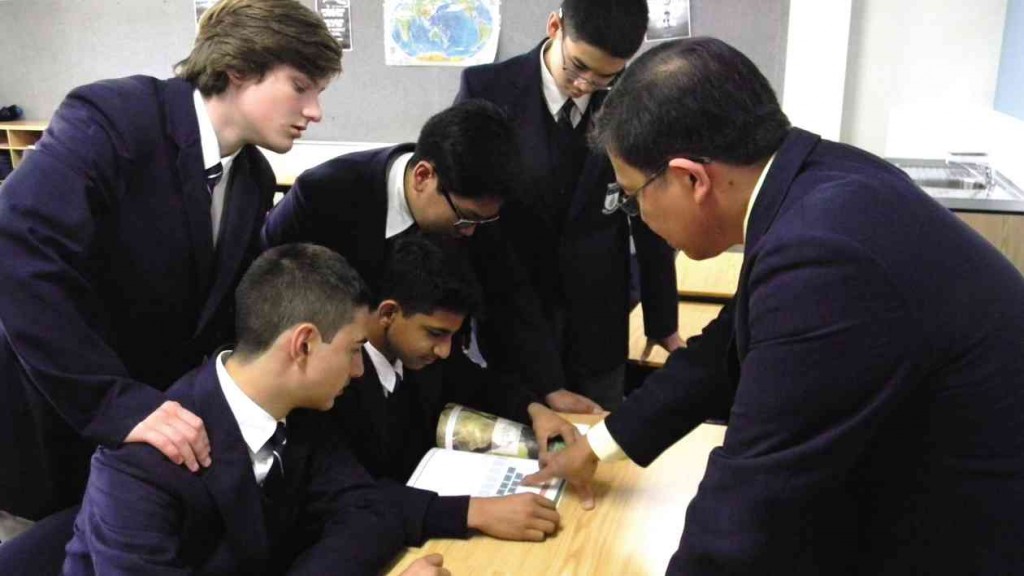Pinoy hurdles teaching challenges in OZ
Jay Pacquing, 43, an English teacher at Wollemi College, an all-boys college in Sydney, Australia, decided to leave the Philippines for greener pastures and to experience teaching abroad.
Although an immigrant, he did not renounce his Filipino citizenship.
But entering Australia as a teacher requires not only credentials but also passing the International English Language Test System (IELTS). Passing the marks for teachers for the four components—reading, writing, listening, speaking—are higher than any profession.
Pacquing says that Filipinos are more attuned to the American accent. He took the IELTS twice and when he flunked, his relatives petitioned him to Australia.
Lifetime process
He arrived in Australia in 2010, and surprisingly, he was immediately accepted at Wollemi College. It was the beginning of unlearning American English, which is very different in pronunciation, spelling and meaning.
One time, Pacquing was asked by his student if “he brings rubber,” which he thought meant rubber band. But it is, in fact, “eraser” in American English.
Most especially, he must eliminate the “Filipino accent.”
“You don’t reconfigure your tongue overnight. My students did not react to that only on my first year of teaching,” Pacquing says.
“Up till now, if there is a word that I pronounce differently from how they say it, they react,” he said, adding “adjusting does not only take 12 months but is a lifetime process. It may take a whole lifetime, depending on how one mingles, accepts and interacts with locals. ”
“In a country where English is the first language, foreigners’ way of speaking the language is obviously different. People notice he is not homegrown. More than the accent, it was the fact that a “different” teacher—with different looks, color, manners, accent and even values—suddenly takes the helm and teaches the entire class,” he explains.
“It was not easy because Filipinos have a different culture. The way we treat our peers and subordinates in the Philippines just do not work in a foreign land.”
Egalitarian society
Australia is an egalitarian society, although there is still the so-called North Shore class but people do not mind. In contrast to the Philippine schools, Filipino students are trained to respect authorities in the classroom as an extension of how they are taught by their parents to respect authorities in the classrooms or the elders.
However, the Filipino students could ask questions and argue with the teachers, too.
Aussie students are trained to challenge these authorities, but it does not necessarily mean that they disrespect the authorities. The culture of challenging what the teacher says is very healthy and espouses a lot of good use of freedom and responsibility, according to Pacquing.
In Pacquing’s college, he teaches each student. If a student does not understand the lesson, the teacher must go down to his level and understand him if he is slacking. If he flunks a test, he must take a retest.
Daunting task
Misbehaving is common among students everywhere, but in Australia, these students are not stereotyped as delinquents. Instead, the teacher gives him a positive feedback and talks to him about the good things he had done before. The students must be treated positively, maturely and with a lot of dignity.
He explains that students are not the teachers’ inferiors or subordinates. There is always a positive way of looking at wrong answers from students.
Filipino teachers should learn to encourage more positively each student in the classroom. Aussies have a beautiful way of encouraging students: “That’s excellent,” “You’re a legend,” “Great job,” “Wonderful.”
However, if they do not like a teacher, they show it, say it and demonstrate it.
But while it may be daunting to teach effectively in a foreign land, one must love not only teaching but also his students’ defects.
Pacquing teaches Year 3 religion, music and reading; Year 5 religion, and Year 9 religion. The students have varied nationalities—Filipinos, Croatians, Maltese and other Europeans who were born or have migrated to Australia.
Filipino teachers get the same benefits as Americans and British people, provided they have the same qualifications.
“The workload is not as heavy as in the Philippine elementary and high schools. And Australia is a laid-back country. School is only from 8:45 a.m. to 3:25 p.m. Teachers report only from 8:15 a.m. to 4:15 p.m. There is a two- to three-week break in between terms,” he says.
The Filipino community
Australia has a large Filipino community. Pacquing says they eat when there is a gathering. Hence, Filipino foods are not missed. But when he is homesick he plays the piano and just thinks of the reasons why he is abroad.
“If one constantly looks at the lighthouse, a rower will never get lost. He may sail adrift to the ocean but as long as he looks back and examines the position of the lighthouse, he will get to his destination. I try to forget about myself. But above all, I spend some time in the school chapel and pray,” he says.
For the Filipino teachers who work abroad, he says that we need to study history and culture as well as improve our English by reading and writing more.
















